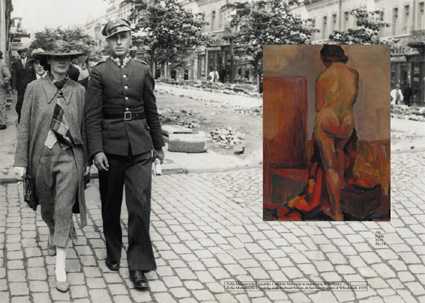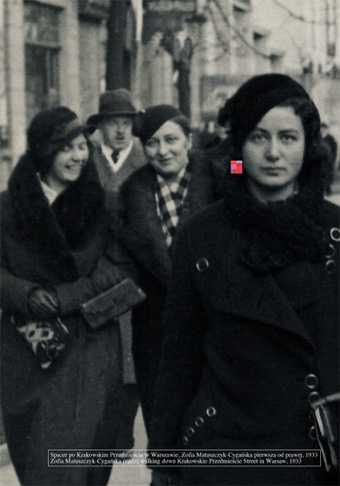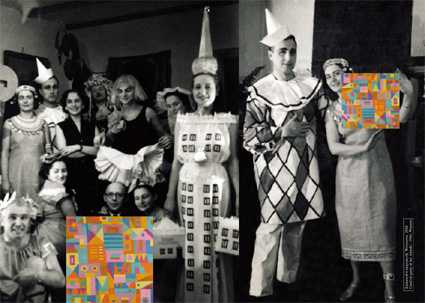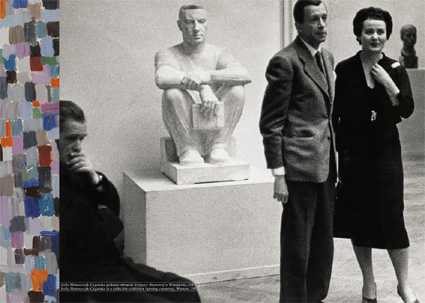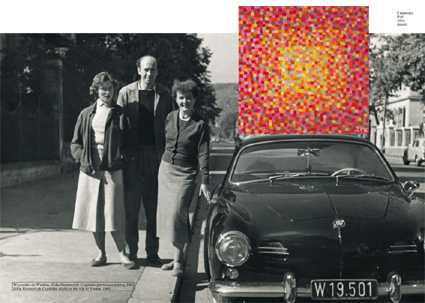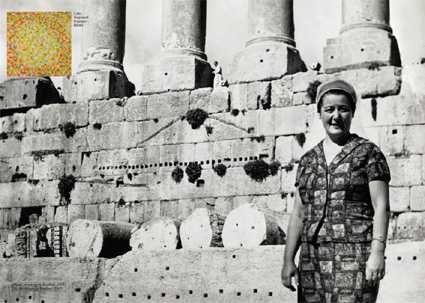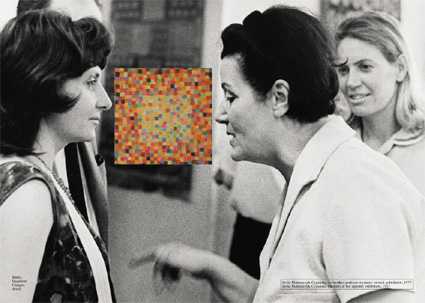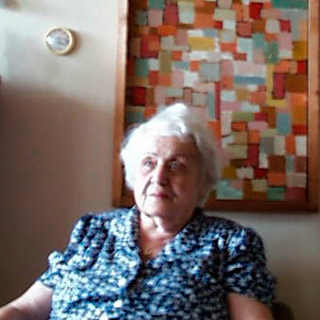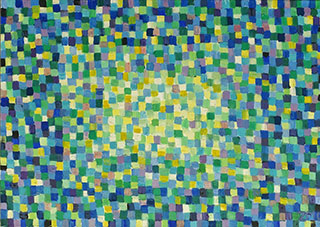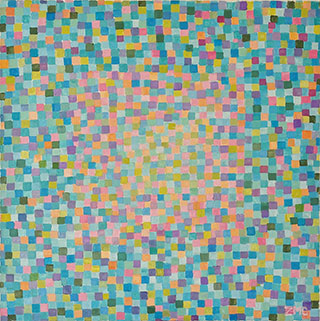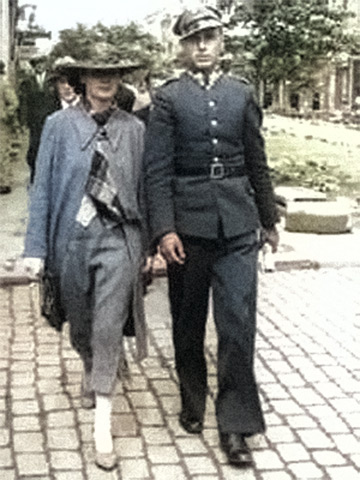Painting, mathematics and whodunits
But you were not supposed to become an artist! You took your entrance exams to a Mathematics Department …
I knew I wanted to be an artist from my earliest years. My father, who was related to Marcello Bacciarelli, was a good draughtsman himself and he wanted me to become a portrait painter, like the famous relative of ours. So, he would send me to a ‘painting nursery’ in the small town we lived in. But as I was taking maths at my high-school finals, my teachers, dazzled with the results I earned, suggested that I try and go to a tertiary Mathematics department. And it so happened. But since I was getting so bored with it, I enrolled for a school of drawing, and in the following year become a Painting Department student, at the Warsaw Fine Arts Academy. My first teacher there was Edward Kokoszka, and then, Professor Mieczysław Kotarbiński who was to be killed under the Nazi occupation. This took me to completing my studies with a diploma, under Felicjan Szczęsny-Kowarski, after the war ended.
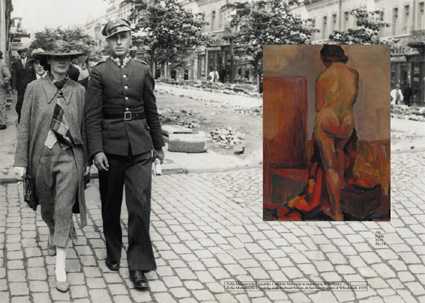

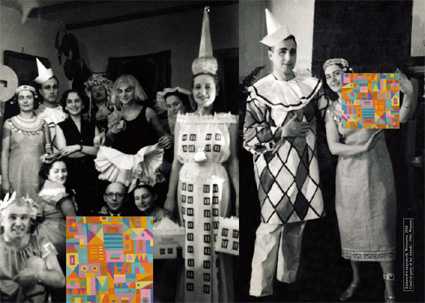
I wanted to paint so much, but I had to make my living somehow, so I took up weaving. I worked for Ład, a co-operative reactivated after the war. I was one of its major designers for several years. I have authored many design drawings and patterns/designs for unique cloths. I was also interested in jacquard, and our jacquards added splendour to several representative and/or public interiors. My own adorned the ones of the Palace of Culture and Science, the National Philharmonic, or the Grand Hotel [all in Warsaw]. I was very busy at that time. I was lecturing at the Academy, ranked as a Senior Lecturer, although I did so for a very short time and soon was removed when the communists arrested by husband who had been a National Army (AK) soldier and had taken part in the Warsaw Uprising.
Back to your studies at the Academy: who mattered most to you there, apart from Mr. Kotarbiński whom you’ve already mentioned?
Wojciech Jastrzębowski, in the first place. As a professor, he taught me a lot. He taught me composition, and lettering too, which I mastered though didn’t like very much. He always would have something interesting to communicate to us. I owe really much to him. I also attended drawing lessons at Tadeusz Pruszkowski’s, and then, Tadeusz Kulisiewicz’s, studio. There, I made friends with the Mierzejewskis, and with Władysław Skoczylas’s daughter, too. Some of my Academy peers were those who later became outstanding artists, including Henryk Tomaszewski, or Halina Centkiewicz-Michalska.
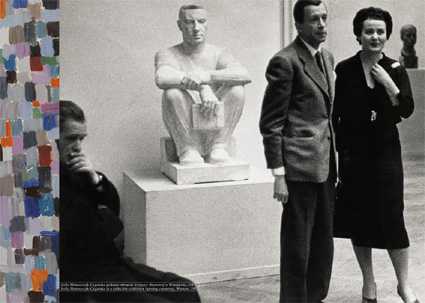
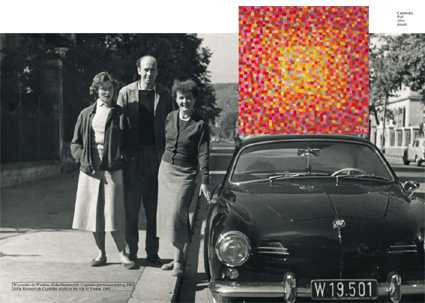
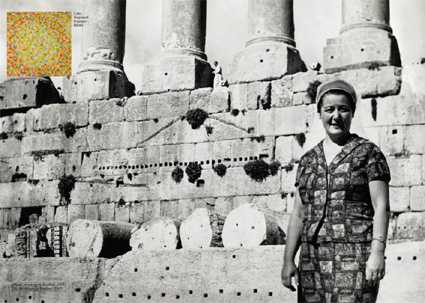
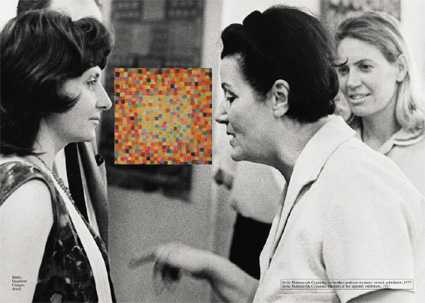
So, when you attended your Academy, did you think of being a painter, or perhaps you wanted to choose a designer’s path, following Professor Jastrzębowski’s actual job?
I always knew I’d be a painter and I was always dreaming of painting as much as possible. However, those painting dreams of mine came true at a fairly late stage. I had made commitments against my family, and so had to take up various appointments. There was a period when I worked simultaneously for three employers. I was namely a teacher with a high-school, a visual-arts circle, and, for a short time, with the Academy. I was a rather harsh teacher, but retained my friendly terms with those young people and, as I believe, could teach them a lot. I’d take them to museums, and we’d go out to the Old Town ruins to paint. Later, it was to turn out that several gifted artists emerged out of those young people – Zbigniew Makowski, for instance. After my husband was arrested, I was banned to work at the Academy. And so I started to work for Ład.
Ryszard Winiarski was one of your students, too, I’m told?
Yes, at the Visual Arts Circle in Muranów [a district in Warsaw]. He later was wont to say jokingly that I’ve wasted his life by pushing him toward painting. A Technical University graduate, he nonetheless decided to try his luck with the Academy. He was a good colourist, his sense of colour was very keen. I have a few of his very early works. However, his engineer’s flair was apparently decisive in that he eventually chose to practise a peculiar type of painting.
It seems to me that painting is somehow related to mathematics. To me, painting should be logical; it cannot be sheer fantasy at all.
In the socialist-realistic period, you didn’t paint much. Those sparse still-lives of 1950s or landscapes of yours mark as if a cubism tamed, a phenomenon commonly described as ‘Picassoes’.
Indeed, in contrast to my father, who, like I’ve mentioned, always wanted me to paint portraits, I was inclined to abstract art, and was not interested in portrait. Besides, 1950s and 1960s was a very tough time. Unfortunately, I had then to approach painting as a marginal activity. I simply lacked time to perform an unconstrained painting labour. I was drawing quite a lot, which I did like. I’ve preserved quite a number of drawings from that period, the one when Warsaw, Gdańsk and other towns still remained destroyed.
A very interesting painting of yours from years and years ago has survived, where those characteristic tiny rectangles already appeared. The picture is divided into three colour fields: grey, black, and grey. Colour accents in the form of small rectangles are occur too. Where did the idea originate?
I can’t tell you now how it actually started. This was back in the sixties. And I was not inspired by any specific artist, have never followed anyone else’s model. Those ideas have just occurred to me. I sometimes think, it’s not me who is painting, but rather, it’s my hand. I obviously have a general basic concept, as to the colours, for that matter. I can see the painting before I actually make it; but once I start to paint, I cease thinking of it, and the process becomes more automatic. I don’t draw sketches, and sometimes make a brief note on a slip of paper, entrusting the rest to my hand. The hand and the eye.
You’ve travelled a lot, haven’t you.
For the first time, I travelled in the mid-sixties, as part of an excursion to Italy. Several artists were invited, Pągowska, Tomaszewski, Fangor among others. And I tried to travel a good deal ever since. I was interested in mosaics which have probably exerted an impact on my painting. So, I visited Monreale, Ravenna, Venice. I like Caravaggio’s paintings very much, and was looking for them everywhere. And I followed the painter to Sicily. I was interested in Spanish painting too, fond of El Greco.
Shortly after the war, a tradition of colourism could be traced in your output; your diploma work under Professor Kowarski is in the same spirit, yet later, a turn toward geometrising abstract art, ensuing from cubistic partition of the canvas, can be seen happening swiftly and suddenly.
I tried to be au courant, watched a number of exhibitions, such as at the Art Propagation Institute which I often frequented. This certainly had an impact on what I was doing. Besides, I was meeting several ‘modern’ artists, occasionally seeing Cybis, Tchórzewski, Stażewski, and the whole body of art critics and historians concentrating them. We were meeting and discussing a great deal.
You have gained momentum over the recent years in your painting activity, if I’m not mistaken.
Yes, I have, for at last, I have the right conditions and peace enabling me to work. Before then, there was the family, professional duties, and by now, nothing has remained out of those things. Finally, I can do what I really want to do. My cat doesn’t require special care, so I can paint without any serious obstacles, or else, read whodunits.


